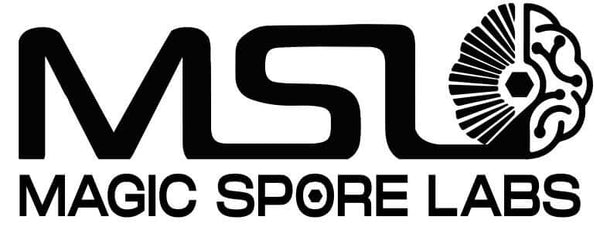
5 Mushroom Contamination Mistakes To Avoid
Share
Mushrooms, the fascinating fungi that have captured the imagination of chefs, foragers, and scientists alike, are not only a culinary delight but also a subject of scientific study. However, when it comes to researching or studying mushrooms in a controlled environment, there are several contamination mistakes that can hinder your progress and affect the accuracy of your findings. Today, we're diving into the top five mushroom contamination mistakes to avoid, ensuring your research is as fruitful as the fungi you're studying.
5 Mushroom Contamination Mistakes
1. Ignoring Sterility in the Workspace
The first mistake many make is not maintaining a sterile workspace. Mushrooms are highly susceptible to contamination from airborne spores, bacteria, and molds. A non-sterile environment can introduce unwanted organisms into your samples, compromising your research. Ensure your workspace is clean and utilize methods like laminar flow hoods, which provide a sterile environment, to prepare and handle your mushroom samples. Regularly disinfect surfaces and tools and consider wearing gloves and masks to minimize the risk of contamination from the researcher.
2. Overlooking Proper Substrate Preparation
The substrate, or the material on which mushrooms develop, plays a crucial role in research studies. Using an improperly prepared substrate is a common pitfall in scientific work. The substrate must be correctly pasteurized or sterilized to eliminate potential contaminants while preserving the necessary nutrients for accurate study outcomes. An oversight in this area can introduce competitive or harmful microorganisms, compromising the validity of results. To maintain integrity in research, ensure the substrate is prepared under sterile conditions and cooled properly before introducing mushroom cultures for study.
3. Neglecting Environmental Control
Controlling the environment is vital for mushroom research studies. Fluctuations in temperature, humidity, and light can compromise study accuracy and increase the risk of contamination. Each species used in research has specific environmental requirements; failing to maintain these conditions can negatively impact the reliability of results. To ensure consistency, implement controlled environments, such as research chambers, where parameters can be closely monitored and adjusted to maintain optimal conditions for the study.
4. Using Contaminated Cultures
Starting with contaminated cultures can compromise a research study from the beginning. Whether working with spores or mycelium, it is essential to ensure the source is reputable and the cultures are pure. Contaminated cultures can introduce unwanted microorganisms into the study, leading to inaccurate data or complete failure of the research. To maintain integrity, utilize sterile culture techniques to isolate samples and conduct regular checks for any signs of contamination throughout the study.
5. Overlooking Regular Monitoring
Lastly, a common mistake in mushroom research studies is not regularly monitoring cultures for signs of contamination. Early detection can preserve the validity of a study by allowing contaminated samples to be isolated or discarded before affecting the rest of the research. Cultures should be inspected daily under proper lighting, checking for unusual growth patterns, colors, or odors. Implementing a structured monitoring schedule ensures contamination is caught early, maintaining the accuracy and integrity of the study.
Best Selling Mushroom Strains

Golden Teacher Mushrooms
The Golden Teacher mushrooms hold a special place in the hearts of mycology enthusiasts. This strain is recognized by its golden caps with specks of yellow. What sets the Golden Teacher apart is not just its striking appearance but its role in the study of mycology. The name itself suggests a kind of mystical learning or discovery, reminiscent of the journeys one might embark upon while studying the complex life cycles and ecological roles of fungi.
The science behind these mushrooms offers insights into the fascinating processes of spore dispersal and mushroom growth, shedding light on how certain conditions influence their development. The mention of "magic mushroom spores" here refers to the importance of spores in mycological studies and conservation efforts, emphasizing the need to understand these organisms deeply.
Amazonian Mushrooms
Amazonian mushrooms, as their name implies, are believed to originate from the Amazon rainforest, one of the most biodiverse regions on the planet. This strain is renowned for its robust size and potent presence. From a scientific standpoint, the Amazonian mushroom showcases the incredible adaptability of fungi, able to thrive in the dense, humid, and competitive environment of the rainforest. Studying these mushrooms offers invaluable lessons on ecosystem dynamics, symbiotic relationships, and the role of fungi in forest health and regeneration.
Blue Meanie Mushrooms
Blue Meanie mushrooms catch the eye with their unique coloration, which stands out starkly against the more common hues of mushroom caps. However, the intrigue of Blue Meanies goes beyond their appearance. These mushrooms serve as a fascinating subject for scientific inquiry, particularly in understanding pigment production in fungi and how environmental factors and genetics play a role in coloration. This strain exemplifies the genetic diversity within the fungal kingdom and opens discussions on evolutionary adaptations and speciation.
Conclusion
In conclusion, avoiding these five contamination mistakes can significantly improve the quality and reliability of your mushroom research. By focusing on sterility, proper substrate preparation, environmental control, using pure cultures, and regular monitoring, you'll set the stage for successful scientific inquiry into the fascinating world of fungi. Remember, meticulous attention to detail is the key to unlocking the secrets mushrooms hold, without the interference of unwanted contaminants.
